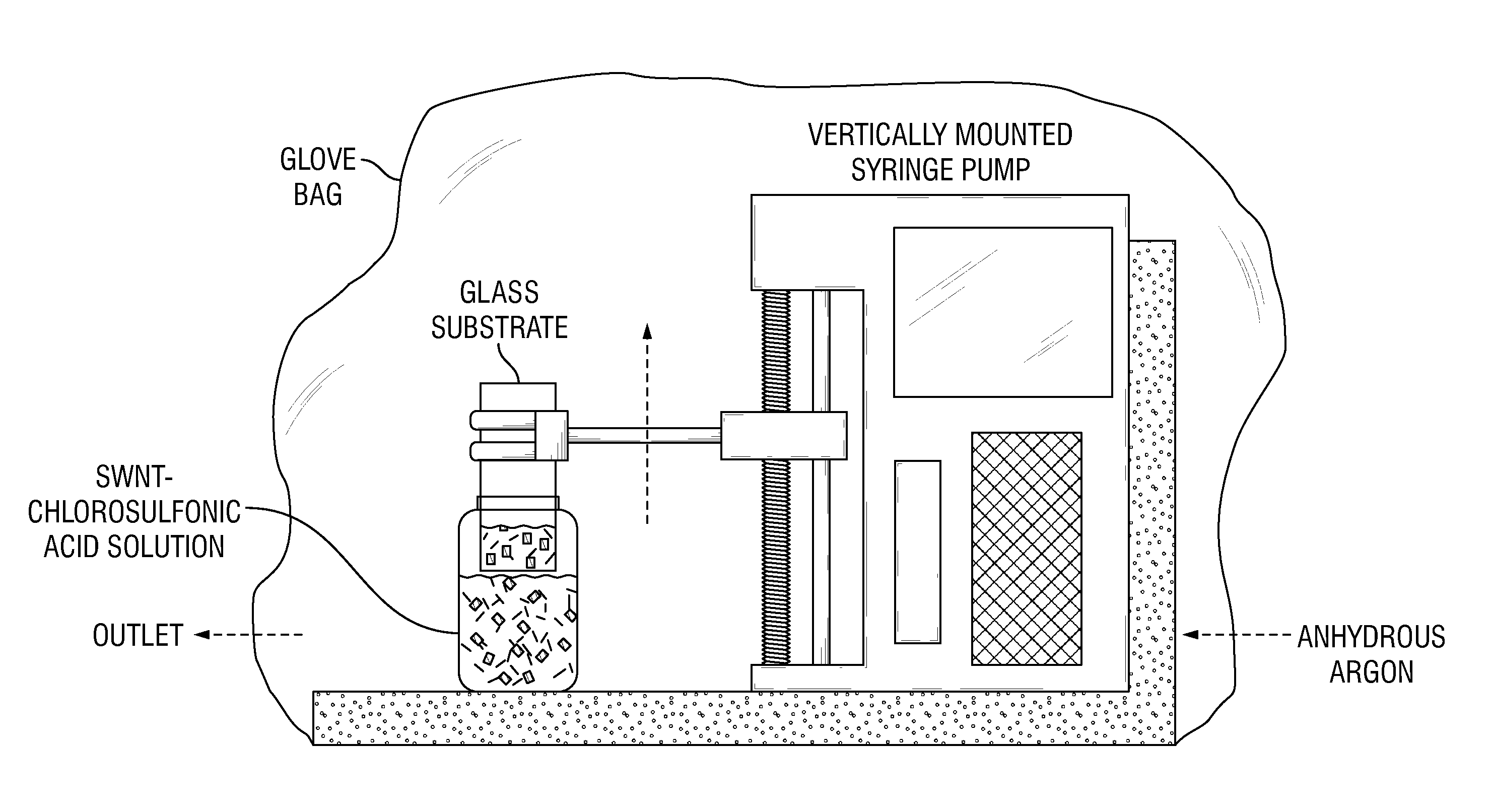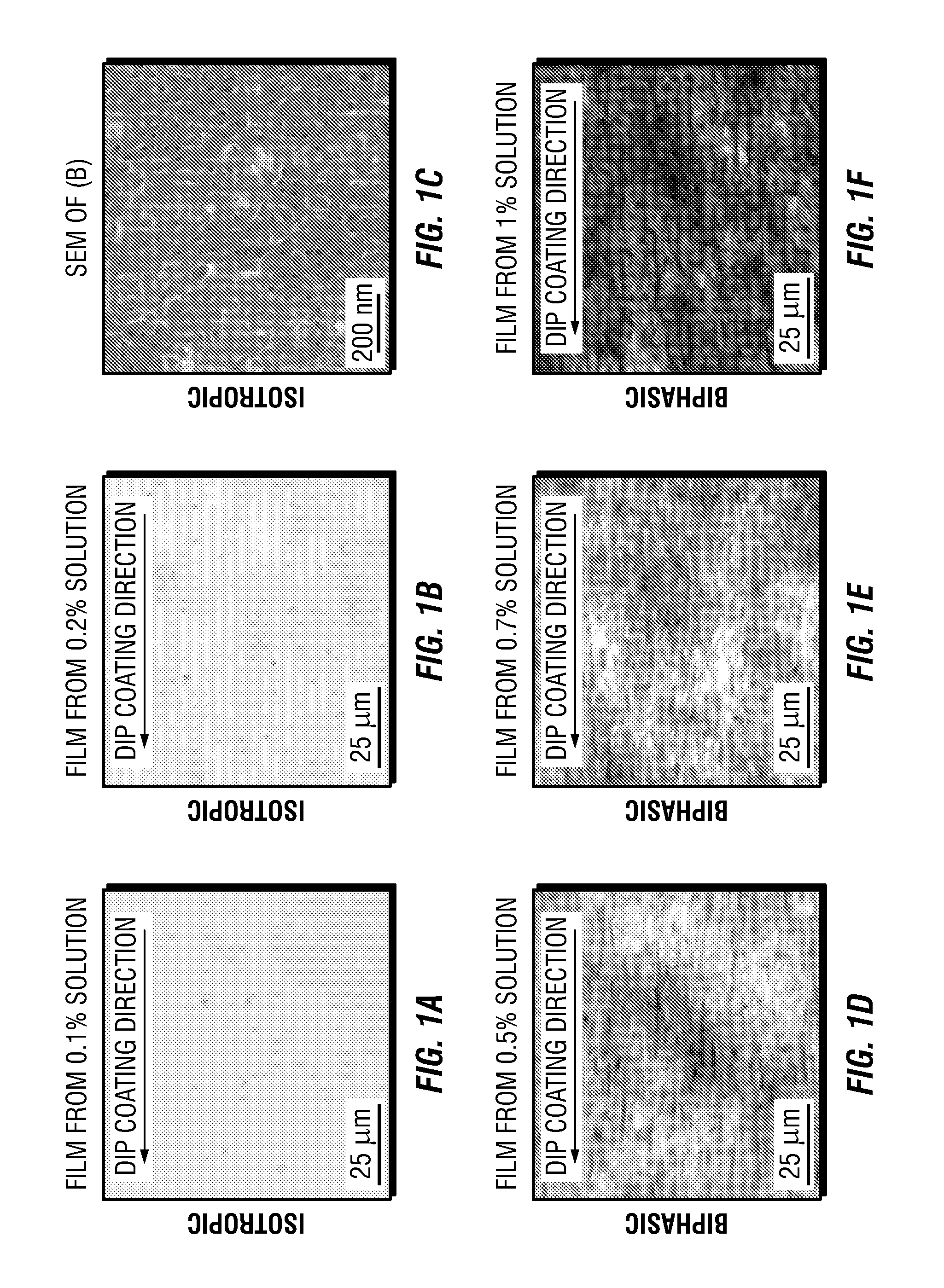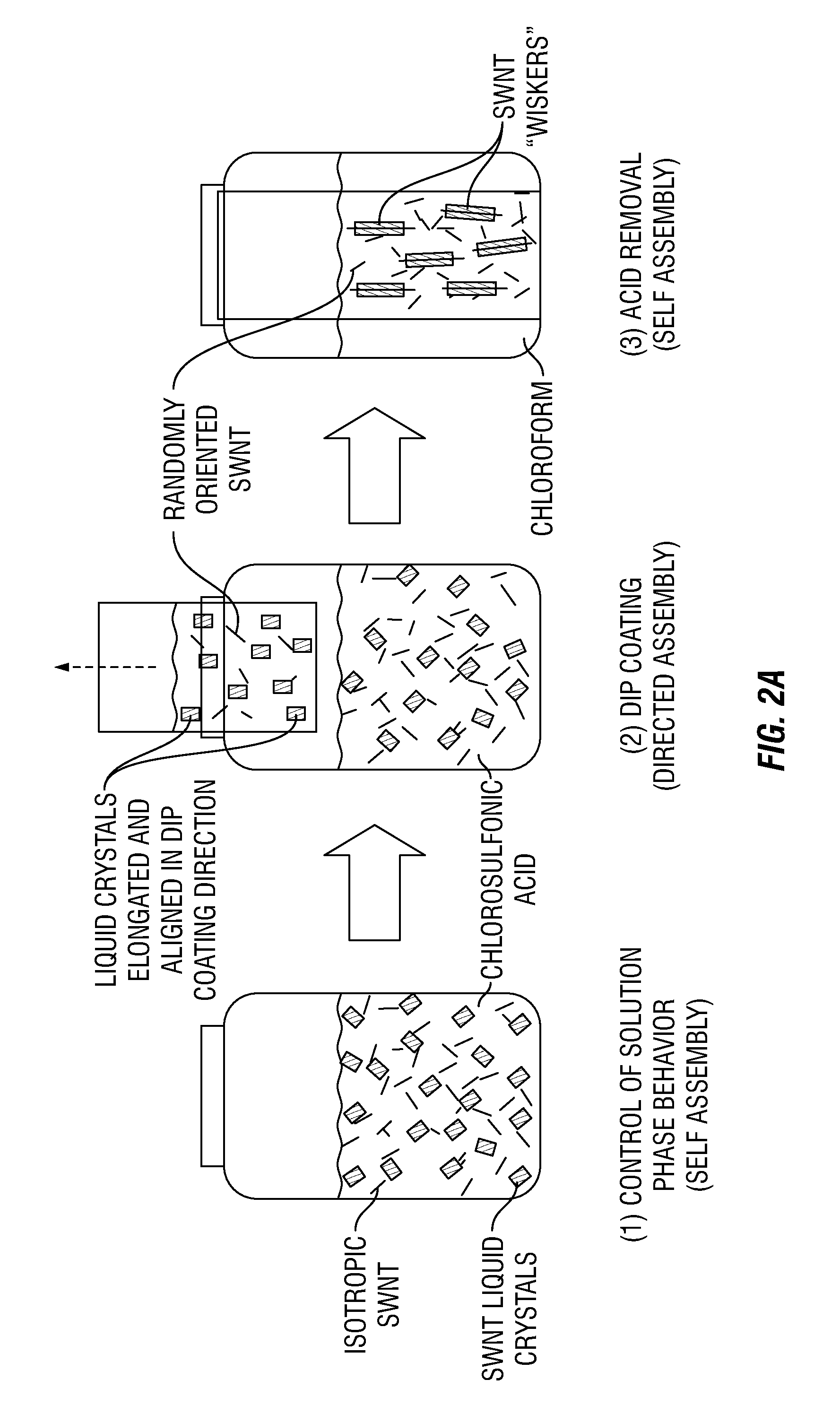Carbon nanotube films processed from strong acid solutions and methods for production thereof
a carbon nanotube and acid solution technology, applied in the field of carbon nanotubes, can solve the problems of affecting the development of multifunctional meta materials requiring precise spatial ordering, affecting the development of multifunctional meta materials, and affecting the quality of carbon nanotube films, so as to achieve controlled morphology and optimal performance
- Summary
- Abstract
- Description
- Claims
- Application Information
AI Technical Summary
Benefits of technology
Problems solved by technology
Method used
Image
Examples
example 1
Materials and SWNT Solution Preparation
[0081]Carbon nanotubes used in the Examples herein are single-walled carbon nanotubes (SWNTs) produced using the high pressure carbon monoxide (HiPco) method (Rice University; batch #188.2). The HiPco SWNTs have an average length of 500 nm and a diameter of 1 nm. The amorphous carbon and iron catalyst were removed by oxidizing at a temperature of 375 C in the presence of SF6 and O2, followed by washing with 6M HCl at 90 C. Dip coating solutions were prepared by stir-bar mixing for 24 hrs. Volume fraction was calculated by assuming a density of 1300 kg / m3 for the SWNTs.
example 2
Film Formation Process
[0082]The actual dip coating setup consists of a vertically mounted syringe pump (Harvard Apparatus PHD 2000) as shown in the schematic diagram (FIG. 1B). Different withdrawal speeds were obtained by controlling the volumetric flow rates for an arbitrarily assigned syringe diameter. The dip-coated film contains both SWNT and the solvent (i.e. chlorosulfonic acid). As soon as the liquid film was withdrawn from the dip coating solution, it was immersed in chloroform for at least 15 mins to remove the acid. It should be noted that upon moisture exposure, chlorosulfonic acid decomposes into hydrochloric gas and sulfuric acid, causing significant de wetting of the film, due to high surface tension of sulfuric acid. To avoid moisture contamination, the whole operation was carried out inside a glove bag constantly purged with anhydrous argon gas, as shown in FIG. 1B.
example 3
Characterizations
[0083]Light microscopy images of the dip coating solutions and final SWNTs films were captured using a Zeiss Axioplan optical microscope. Liquid samples were prepared inside an anhydrous glove box as described, where the sample solution was confined between a microscope slide and cover slip, and sealed with aluminum tape. SEM images were captured using JEOL 6500F. For TEM samples, the SWNT film was detached from the glass substrate by submerging the sample into DI water. A TEM grid was then used to recover the detached part of the film for imaging (JEOL 2010, 100 kV). Steady shear rheology of the solutions was characterized using a stress-controlled rheometer (AR 2000ex; TA Instruments) enclosed inside a custom-made glove box constantly purged with dry air. Relative humidity during sample loading and testing was kept below 2-3%. Parallel plate geometry made of stainless steel (SS 316) was used. SWNT film thickness (after chloroform quenching) was measured using mech...
PUM
| Property | Measurement | Unit |
|---|---|---|
| thickness | aaaaa | aaaaa |
| thickness | aaaaa | aaaaa |
| transmittance | aaaaa | aaaaa |
Abstract
Description
Claims
Application Information
 Login to View More
Login to View More - R&D
- Intellectual Property
- Life Sciences
- Materials
- Tech Scout
- Unparalleled Data Quality
- Higher Quality Content
- 60% Fewer Hallucinations
Browse by: Latest US Patents, China's latest patents, Technical Efficacy Thesaurus, Application Domain, Technology Topic, Popular Technical Reports.
© 2025 PatSnap. All rights reserved.Legal|Privacy policy|Modern Slavery Act Transparency Statement|Sitemap|About US| Contact US: help@patsnap.com



